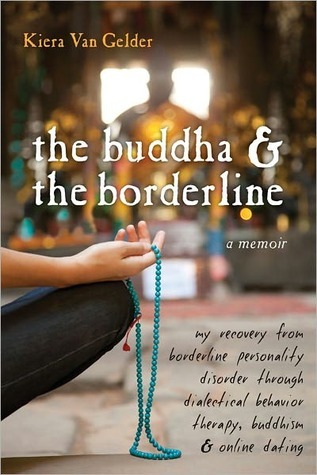More on this book
Community
Kindle Notes & Highlights
Read between
December 4, 2022 - January 11, 2023
The truth is, I have borderline personality disorder. But it will take many therapists, many diagnoses, many medications, and many treatments before a name is put to this suffering and I can start down the path to recovery.
If you met me, you’d never suspect the suicide attempts, hospitalizations, and diagnoses. But if you saw me in a relationship, you’d know something isn’t quite right.
I can feel it resurfacing, that thing at the core of me that I’m always trying to control. Given enough stress and heartache, it always comes back and breaks through my façade. I’m so good at beginnings, but in the end I always seem to destroy everything, including myself.
For some people with BPD, the need to escape is so overwhelming and the pain so intolerable that no thinking or planning happens. They attempt suicide the way crack addicts do crack, habitually and impulsively, using death to alleviate the compulsion and pain. These attempts aren’t necessarily planned. And a lot of times, they’re instantly regretted.
If I want to survive, I have to stop turning my energy against myself—stop being the worker bee, the supplicant always feeling helpless and asking for help, the one who desires, unrequited. I have to transform this despair and anger into power.
a list of DBT goals and stages on a handout, adding a fourth stage to the three Dr. Linehan described in her textbook.
Now that I understand this disorder, I know that I have different needs, and that the way people treat me and the environment I enter will have a huge impact on how I react and perform. If I get triggered, I need to be able to self-soothe and calm down. I need a way to moderate the pressure and stress so I don’t freak out.
And that’s one of the things I really hate—hate!—about BPD: that such a small incident can topple my inner composure, causing me to feel so vulnerable and out of control.
First, we’re highly sensitive to emotional stimuli (meaning we experience social dynamics, the environment, and our own inner states with an acuteness similar to having exposed nerve endings). Second, we respond more intensely, and much more quickly, than other people. And third, we don’t “come down” from our emotions for a long time. Once the nerves have been touched, the sensations keep peaking. Shock waves of emotion that might pass through others in minutes might keep cresting in us for hours, sometimes days.
As anyone with BPD knows, the charges so often leveled against us include being overly sensitive, overly reactive, and emotionally intense and unpredictable.
The couples emerge too, strolling, holding hands, cuddling. When I see them, I have chest pains and feel possessed with envy and the conviction that I will never be loved that way.
Good relationships are said to be the greatest factor in happiness after basic material needs have been met. And yet BPD symptoms sabotage relationships. So it’s a vicious cycle. Being alone is torture, but so is being close to others, needing them, having them.
Another dilemma of the borderline: Connection gives us our life, yet it also threatens to take it from us.
Ethan asks me what kind of partner I’m looking for, and one thing is clear: I need to be with someone who can understand and accept BPD.
I need a certain kind of person to grow intimate with: someone who doesn’t view my vulnerabilities as weaknesses; someone who can remain calm in the face of my upsets; someone whose own world and sense of self is strong enough to withstand the storms that will pass through it as I learn to trust.
After a lifetime of being an escape artist, I finally understand that the only way out is through.
Even if everyone in the world were to accept me and my illness and validate my pain, unless I can abide myself and be compassionate toward my own distress, I will probably always feel alone and neglected by others.
“Do you understand that, given Kiera’s numerous diagnoses combined with BPD, she’s very lucky to be alive?” My mom shakes her head. “One in ten people with BPD die by suicide. Factor a drug addiction into the equation and it’s higher. Add depression and all the other issues, and the chances of survival are even less.”
In the process, you develop the ability to create a life worth living. Back then that goal seemed impossible, but here I am. I have learned to reduce my pain and misery. I still suffer, but in many ways my suffering is similar to that of everyone else.
These days, when people ask if I’ve recovered from BPD, I don’t say yes. Despite my current sense that the symptoms have shifted back over the border into the normal range of human suffering, I am aware of the potential for its reemergence—not as a pathology that needs to be cured, but a set of problems that make my life feel unbearable. And yet without a name for it, I never would have been able to learn how to transcend it. Indeed, without BPD, I wouldn’t have had the same opportunity to awaken. So while it’s undeniable that BPD destroys people, it can also open us to an entirely new way of
...more
There are many uncertainties regarding BPD recovery, but by now I’m quite sure that I’ll never look for another savior to deliver me to myself. If any training of my mind has taken hold, it’s to turn toward the teachings and the relationships that keep me on the path.


